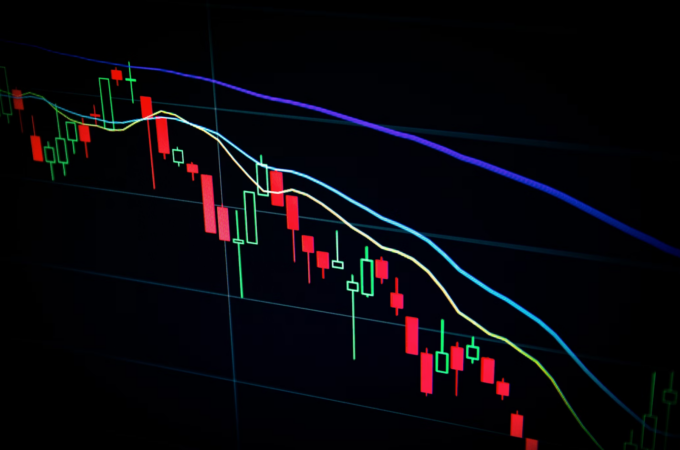
Mobilizing Profit Opportunities: Becoming Proficient in Oil Trading Strategies
In the ever-evolving world of finance, oil trading has emerged as a lucrative opportunity for individuals and businesses seeking to generate significant profits. The global demand for oil remains consistently high, making it a desirable commodity to invest in. However, to succeed in the oil trading market, one must possess a deep understanding of the strategies and dynamics involved. In this comprehensive guide, we will delve into the world of oil trading with a focus on the proper oil and bitcoin analysis, which is an Oil trading platform, exploring essential strategies and techniques that can help you mobilize profit opportunities effectively.
Understanding Oil Trading
The Basics of Oil Trading
Oil trading involves the buying and selling of various oil-based products, such as crude oil, gasoline, and heating oil, in financial markets. Traders aim to capitalize on price fluctuations, leveraging market trends and analysis to make informed investment decisions. The volatility of the oil market presents both risks and opportunities, requiring traders to adopt astute strategies to maximize profits.
Factors Affecting Oil Prices
To navigate the oil trading landscape successfully, it is crucial to comprehend the factors that influence oil prices. Several elements impact the supply and demand dynamics of oil, including geopolitical events, global economic trends, weather conditions, and production quotas set by oil-producing countries. By staying updated on these factors, traders can anticipate price movements and execute trades accordingly.
Types of Oil Trading
Spot Trading: Spot trading refers to the purchase or sale of oil for immediate delivery. It involves trading contracts that settle within a short time-frame, typically within two business days. Spot trading offers traders the flexibility to react quickly to market conditions and capitalize on short-term price fluctuations.
Futures Trading: Futures trading involves the agreement to buy or sell oil at a predetermined price on a specified future date. This approach allows traders to mitigate risks associated with price volatility and secure future profits. By analyzing market trends and utilizing technical indicators, traders can make informed decisions about when to enter or exit futures contracts.
Options Trading: Options trading grants traders the right, but not the obligation, to buy or sell oil at a predetermined price within a specified time period. Options provide flexibility and risk management capabilities, enabling traders to participate in the market while limiting potential losses. By employing various options strategies, traders can profit from both rising and falling oil prices.

Building a Profitable Oil Trading Strategy
To become proficient in oil trading and unlock profit opportunities, it is essential to develop a comprehensive trading strategy. Let’s explore key elements to consider when formulating your strategy.
Fundamental Analysis
Fundamental analysis involves evaluating macroeconomic indicators, industry reports, and geopolitical events to assess the supply and demand dynamics of oil. By understanding these fundamental factors, traders can anticipate market movements and make informed trading decisions. Factors to consider include:
- Global oil production and consumption levels
- Political stability in oil-producing regions
- Economic indicators affecting oil demand, such as GDP growth and industrial output
- Environmental regulations impacting the oil industry
Technical Analysis
Technical analysis involves studying historical price patterns, chart indicators, and statistical models to forecast future price movements. Traders use various tools and techniques, such as moving averages, trend lines, and oscillators, to identify trends, support, and resistance levels. Technical analysis can help traders determine optimal entry and exit points for their trades.
Risk Management
Successful oil traders prioritize risk management to protect their capital and preserve profits. Risk management techniques include:
- Setting stop-loss orders to limit potential losses
- Diversifying the trading portfolio to mitigate risks associated with individual assets
- Employing proper position sizing to ensure trades align with risk tolerance
- Regularly reviewing and adjusting risk management strategies to adapt to changing market conditions
Continuous Learning and Adaptation
The oil trading market is dynamic, and traders must remain proactive in enhancing their knowledge and skills. Continuous learning involves:
- Staying updated on global economic and political developments
- Monitoring industry news, market trends, and oil price movements
- Engaging with experienced traders, attending seminars, and participating in educational programs
- Analyzing and evaluating past trades to identify strengths and areas for improvement
Conclusion
Becoming proficient in oil trading and mobilizing profit opportunities requires a deep understanding of the strategies and dynamics involved. By combining fundamental and technical analysis, adopting robust risk management practices, and maintaining a thirst for knowledge, you can position yourself for success in the oil trading market. Remember, consistency, discipline, and adaptability are key to navigating the complexities of this lucrative field. Embrace the power of knowledge, hone your skills, and embark on a rewarding journey toward mastering oil trading strategies.




